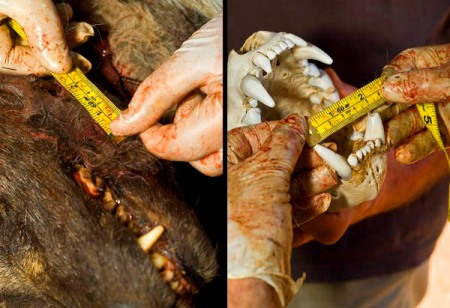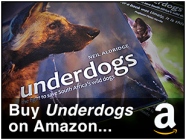 Poaching is one of those topics that wherever you go it is bound to draw debate – often controversial, sometimes heated but never dull. It’s a topic that I feel strongly about even though it’s often hard to form clearly-defined principles. The news of the choice to award Swazi environmentalist Thuli Mahama the Goldman Environmental Prize highlights some of the issues that make poaching a polarised and murky topic.
Poaching is one of those topics that wherever you go it is bound to draw debate – often controversial, sometimes heated but never dull. It’s a topic that I feel strongly about even though it’s often hard to form clearly-defined principles. The news of the choice to award Swazi environmentalist Thuli Mahama the Goldman Environmental Prize highlights some of the issues that make poaching a polarised and murky topic.
On paper, the recognition of the work of Mahama is a victory for common sense. After all, many of the fat cats, officials and game reserve employees that get caught poaching the animals that they are charged to protect often get off scott-free. All the while, the desperate rural villager poaching meat to feed his starving family is hit so hard with the heavy hand of the law that it often costs them their lives. And this is what Mahama has been fighting for – an end to the violent anti-poaching tactics that leads to suspected poachers being hunted down, killed or beaten. She wants to see poachers prosecuted through the correct legal channels.
Like I said, on paper the theory is noble. If the work of people like Mahama can ensure that all poachers are treated equally and convicted, no matter what their status, then it will be a victory for conservation. However, out on Africa’s plains of reality, just as in other parts of the world, the situation is much less clear-cut. Poachers are often armed, sometimes set booby traps and more often than not work in groups. As a result, plenty of game rangers and anti-poaching scouts are killed by poachers every year.

Let us assume that arrests are made – this does not always end in a prosecution or even result in a poacher being deterred from crossing that line again in the future. The late Bruce Bryden, former chief ranger in South Africa’s Kruger National Park, recalls how his successful arrest of a gang of poachers from Mozambique turned sour. The group were simply released from custody on the grounds that they were all high-ranking police or security officials.
One of the most difficult areas to draw judgement on is the issue of dealing with the hungry subsistence poacher who is out to catch an impala for his family compared to dealing with the poacher who is looking to pocket cash in return for rhino horn, ivory or tiger bone. It is the latter that attracts the scorn of the media (and rightly so when their quarries are the critically endangered) while the simple hunter-gatherer often attracts pity.
Mahama points out that the poaching carried out by the hungry rural villager is ‘nothing more than the odd killing of an antelope or warthog’ but while that may be their intent, the method of setting dozens of wire snares also leads to the maiming or slow and painful death of countless other species that the hunter-gatherer has no interest in eating. As a result, this ‘subsistence’ poaching can have a greater negative affect on the overall biodiversity of an area through this kind of secondary impact.

But we can’t afford to sit back and compare how or why animals are poached or what a poacher’s intent may be. We are losing too many species and habitats at such an alarming rate…and in a year when we are supposed to be celebrating biodiversity! Yes, poachers do need to be dealt with through the legal processes championed by Mahama but at a time when rhino poaching is on the increase again we also need to look broader toward the issues of security, demand and trade. As chief executive of SANParks Dr David Mabunda recently said:
No matter how hard we try to reduce or stamp out this inferno, the solution will come from…taking the war to the “Armani-suits and silk tie” clad rhino dealers and reduce the demand in South East Asia through international interventions driven by CITES.
 In reality, it’s a multi-tiered offensive that nations need to invest in when it comes to the UN Convention on Biological Diversity in Japan later this year. Greater legal protection of wildlife and a crack-down on trade will no doubt be discussed but, on the ground, better protection of endangered species and habitats is a necessity. That includes more anti-poaching patrols in sensitive areas, better fences along human-wildlife conflict boundaries and certainly a better deal for the army of grossly underpaid yet committed game rangers and scouts whose difficult and dangerous job it is to protect our natural wealth. No longer can we sit back and expect someone to be a guardian of an endangered species on a pitiful salary when if it wasn’t for their devotion they could be earning far more money illegally plundering that same species.
In reality, it’s a multi-tiered offensive that nations need to invest in when it comes to the UN Convention on Biological Diversity in Japan later this year. Greater legal protection of wildlife and a crack-down on trade will no doubt be discussed but, on the ground, better protection of endangered species and habitats is a necessity. That includes more anti-poaching patrols in sensitive areas, better fences along human-wildlife conflict boundaries and certainly a better deal for the army of grossly underpaid yet committed game rangers and scouts whose difficult and dangerous job it is to protect our natural wealth. No longer can we sit back and expect someone to be a guardian of an endangered species on a pitiful salary when if it wasn’t for their devotion they could be earning far more money illegally plundering that same species.
Visit my main website at www.conservationphotojournalism.com






























